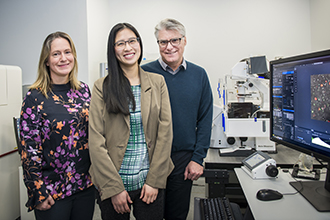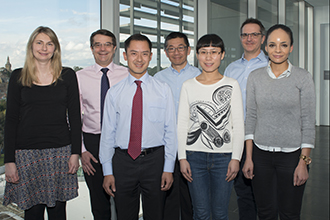Our lab has contributed a series of discoveries that advance our understanding of how the cells of the immune system are controlled and ‘add’ signals together to affect their fate.
In a series of studies over two decades we have shown how both T and B lymphocytes operate a ‘cellular calculus’ that takes input from receptor delivered signals to regulate their times to divide, die and differentiate.
We championed the view that cells behave as if made of modular mechanical components connected and altered by these signals. Such internal operators include division and death timers as well as differentiation fates controlled by both timers and division counters. Combining such operators into multiscale cell models help guide the experimental dissection of this otherwise very complex system.
Importantly, we have also discovered that cells themselves differ in their construction as a result of stochastic processes. This feature ensures populations of similar cells give rise to heterogeneous outcomes. Thus, our insights into how to model and predict immune cell responses take advantage of the modular construction of cells, their quantitative ability to process signals according to rules definable by a cellular calculus, and our discovery that the remarkable differences between similar cells can be interpreted within probabilistic principles.
Ultimately this work is aimed at completing a consistent theory for immunity that can be viewed as the modernization of the clonal selection theory.
Recent highlights include identification of how oncoprotein Myc serves as a heritable timer for controlling how long cells divide for after stimulation (See Heinzel et al. Nature Immunology 2017), and the identification of intersecting stochastic processes that regulate the choice of antibody isotype adopted by stimulated B cells (Horton et al. Immunity 2022).







